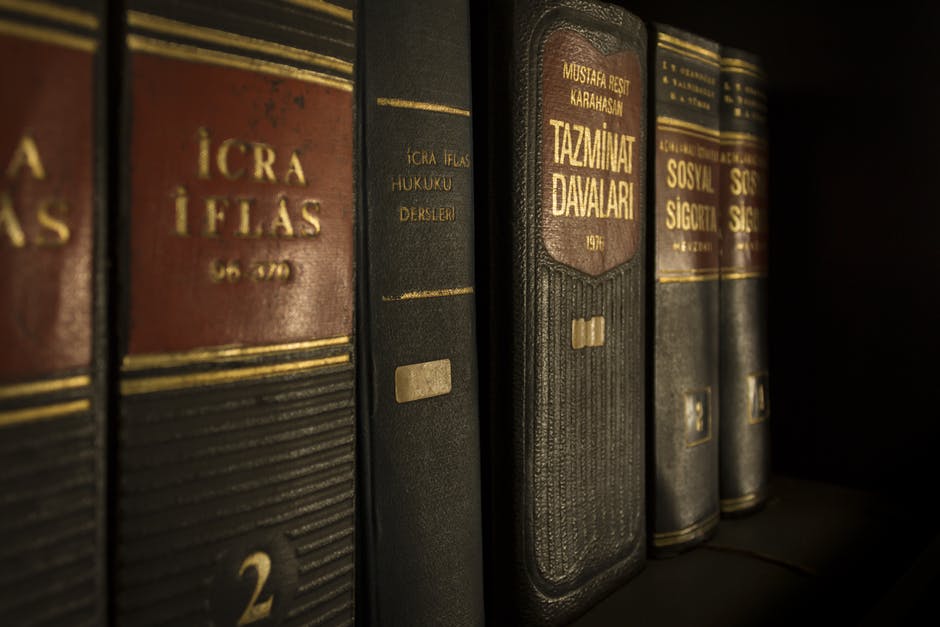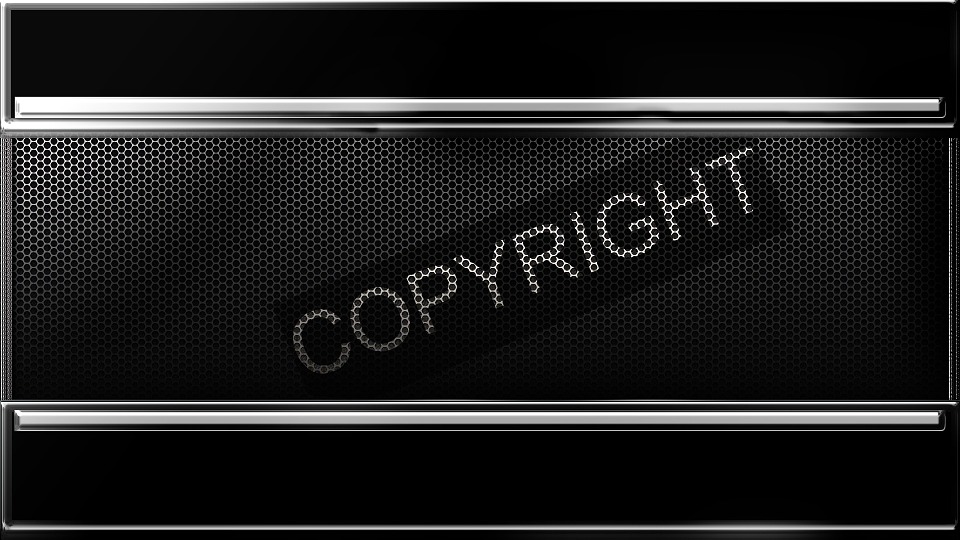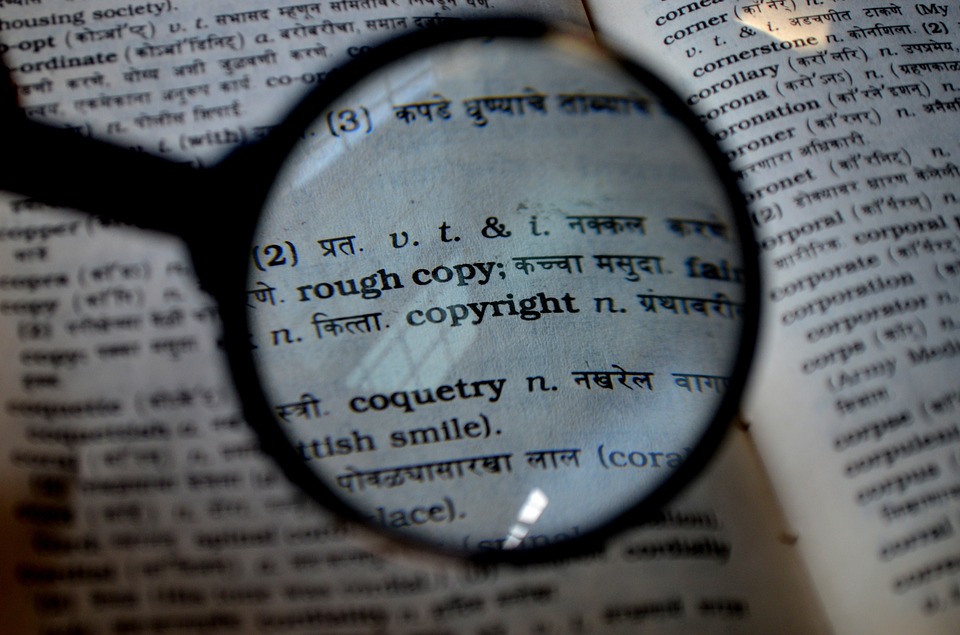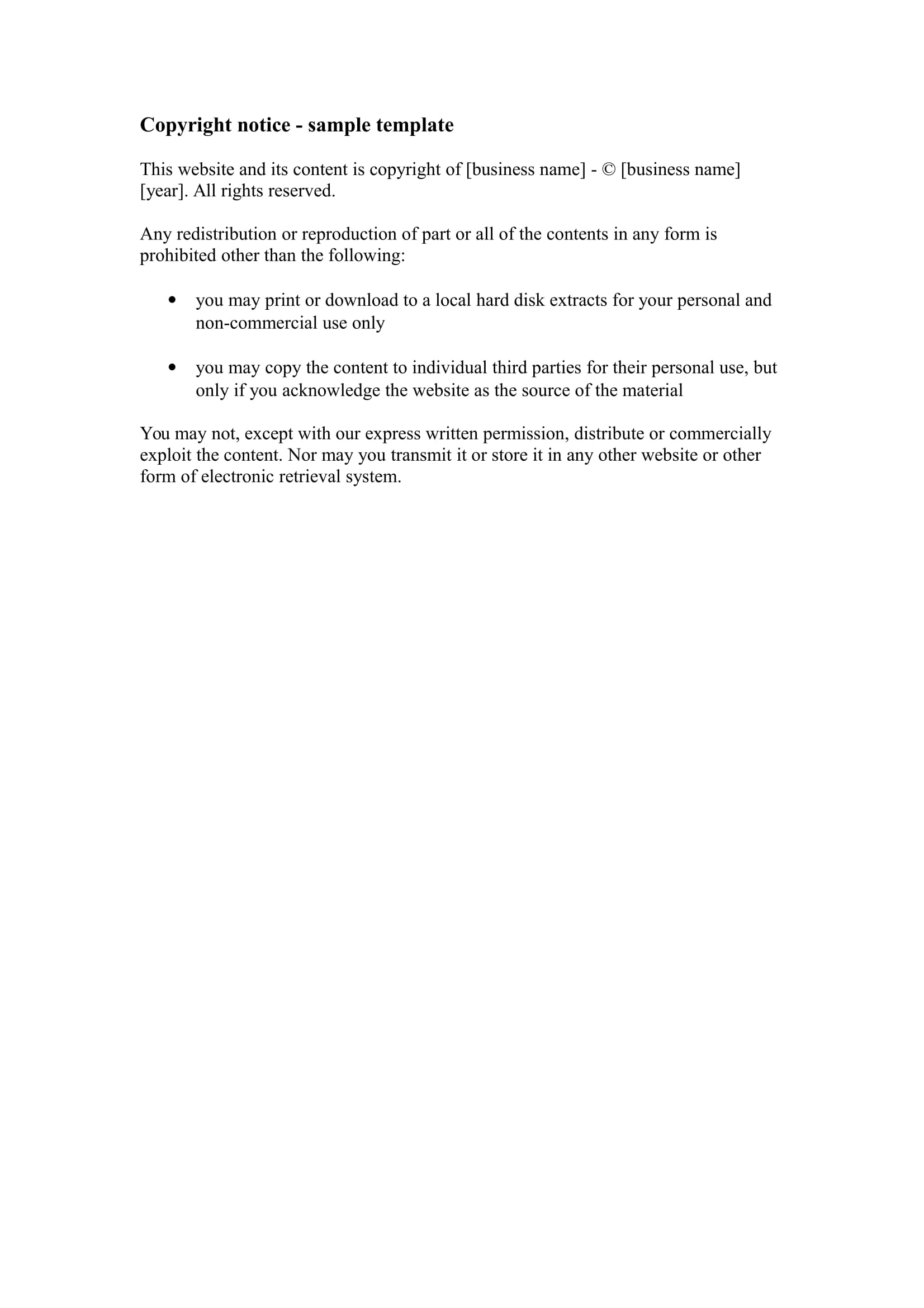Copyright Statement Examples to Download
When an artist or creator produces work of his/her own, he would most probably want to ensure the rights to duplicate and sell his own work. An individual has invested so much time, money and energy in order to come up with a unique output and if someone steals that output, it defeats the purpose of original ownership and of possibly earning a living.
Contrary to what people believe, it is not a sign of selfishness or narcissism to want the full ownership of one’s work, it is taking responsibility and taking the right action with what you are passionate about. It protects your intellectual property from being stolen, renamed and distributed without your knowledge.
What is a Copyright Statement?
The US Congress enacted the first federal copyright law in May 1790, and the first work was registered within two weeks. Historically, copyright was created to serve a utilitarian function, namely “to promote the progress of science and useful arts.” Also, you can see the Website Hosting Agreement Checklist Examples.

A copyright statement, also commonly known as the copyright formal notice in the US, is a short statement giving full ownership to the creator of an original work. It protects the legal exclusive right of the creator for usage and distribution.
It functions as a notice to the public that the work is copyrighted and give information about the copyright holder. However, even it is protected by the law, the exclusive rights have limitations. It is also not absolute as it has limitations and restrictions. A major limitation on copyright is that it only protects the original expression of ideas, and not the underlying ideas themselves.
Importance of a Copyright Statement
1. Your Work is an Asset
Your original work is a potential asset no matter what others may think, so it should be treated as such. It can be worth a lot in the future and can even be used as a financial collateral. Your right to legal ownership of your own work must be protected in the sense that you can earn from it. It also acts as a legacy you pass on as a copyright can last for more than 70 years. You may also see the Key Differences Between Agreements and Contracts
2. Protect Your Rights
If someone infringes you right or illegally copies and distributes your original works, copyright will give you a legal grounds to sue the guilty party. You can either demand them to pay you for a license or compensate for any financial loss you may have been subjected to. If they are using your work behind your back, you have the right to pursue them and let them pay the amount they have earned from selling your work without your consent.
3. Licensing is the Way Forward
By definition, licensing agreement is a legal authorization from you to another party that permits them to use some (or all) of your copyrighted works. After you have copyrighted your works and it has attracted interested parties, you can explore your licensing option. It also increases the legal protection of your work and can be used as evidence when the other party involved does not fulfill their end of the bargain. You can take proactive steps to ensure the legal rights to your intellectual property, for example licensing, since copyright infringement happens all the time.
How to Create a Copyright Statement
1. Determine if Your Work is Protected by Copyright
In general, the copyright owner for works first published before March 1, 1989, was required to place an effective notice on all publicly distributed “visually perceptible” copies. Examples of visually perceptible copies include books, sheet music, photographs, or films. A visually perceptible copy does not include those that embody a sound recording like a CD, a vinyl record or an MP3 recording.
However, as of March 1, 1989, onward, you are no longer required to provide notice on any type of work. Nevertheless, for good measures, it is still the best option to include a copyright notice in your work to deter others from taking ownership. You may also see the Selling Your Business – Checklist
2. Create the Appropriate Symbol
According to the US Copyright Office, visually perceptible copies need to incorporate the copyright or the “the C in a circle” (©) symbol, and the ? symbol for phone records. You can also use the word “Copyright” or the abbreviation “Copr.” to make it visible that your work is protected by copyright.
3. Identify the Year of Publication
In accordance with the Copyright Law, published materials refer to the distributed copies or phone records of your work. In identifying the year, it is when you have successfully published your works by sale or other transfers such as leasing.

4. State Your Name or the Name of the Copyright Owner
You need to provide the name of the copyright holder. Use your real name or any other name that you have the legal right to use. If you want your business to hold the copyright, make sure that your business has been properly established. With a phone record, the name of the producer will be considered part of the notice if the producer is named on the label or container with the notice containing no other name.
5. Place the Copyright Notice in Your Work
This means you should affix your copyright in a section visible to the naked eye. It should not be concealed nor hidden from view. On a website, copyright notice is most often found in the footer, at the bottom of a piece of written music, or in the first few pages of a book. You may include a copyright notice in the credits or with the title in a video.
6. Include a Rights Statement
This statement tells the public what rights you are reserving for yourself. For example, you could write “All Rights Reserved” if you don’t want to allow anyone to copy your work, “Some Rights Reserved” for a creative commons license, or “No Rights Reserved” if you want to give all rights away.
Copyright Notice Example
Only recently, the use of a copyright notice is no longer a legal requirement for copyright protection in the United States. However, its use confers significant advantages. A copyright helps deter the public from infringing your right to your own work.
When registration is made before the infringement or within three months after the publication of a work, a copyright owner is eligible for statutory damages, lawyer fees, and other court costs. It will also be a stable ground to sue the guilty party if the infringing has occurred.



